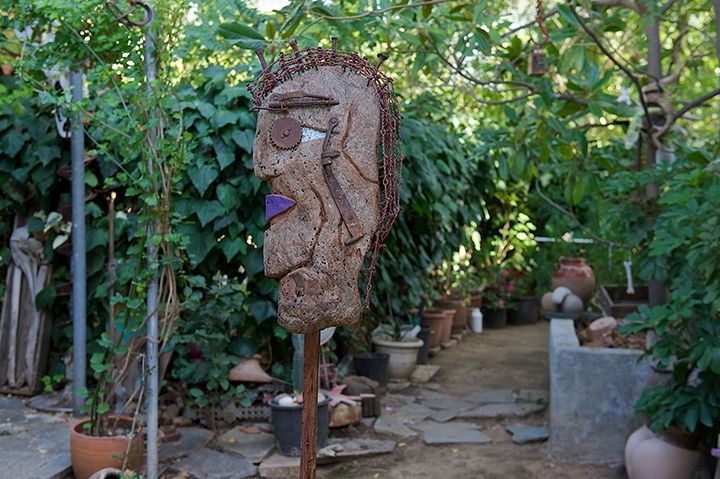From Phthia’s spacious vales; and Hella, bless’d
With female beauty far beyond the rest.
Full fifty ships beneath Achilles’ care,
The Achaians, Myrmidons, Hellenians bear.
The God-made Myrmidons by Tasos Bouras
An army well coordinated for a battle, intertwined with wood, through which it emerged, according to legend, never willing to retreat and absolutely obedient to their leader, the Myrmidons<Myrmidon<Mermix (i.e. ant).
According to one of the legends, Hera who wanted to take revenge for her husband’s infidelity, sent three snakes to Aesop’s island, Aegina. The reptiles poisoned the water and all those living on the island were faced with a tragic death. The only one who survived was Aiakos. Then his mother Aegina, so that he wouldn’t feel lonely, asked Zeus to help him. Zeus turned the ants lying on a rotten tree-trunk into humans, the Myrmidons.
The proud warriors…the Myrmidons by Tasos Bouras.
The artist has searched for the wood in order to mold Achilles’ warrior. His material is not fresh, it is rather old, as plenty of rain and sea water has washed it away. So, the wood is the nest, the matrix through which the legend of the Myrmidons is reborn. Even the secondary materials (metal, leather, horn) are old, as time has left its scars behind.
His shapes compose a compact group. Every single warrior is a vital part of the chain; nobody can get out of the phalanx. In essence, every warrior is a version of a characteristic structure, just like an ant which can be no different compared to its troop to the human eye. Except for the fact that in this case regarding Tasos Bouras’ installation, every head wants to look just like their leader, the most heroic Myrmidon, the divine Achilles, with long hair, upright, with staring eyes, focused on the target, rarely melancholic or tender, just as Achilles’ warlike moments in Iliad which were similarly rare.
The way the heads are set up depicts the readiness or impatience of every brave one before the battle. One may actually feel the breeze in the battlefields of Troy blowing through the bodies, the beating of the heart within the absolute silence, being synchronized to one beat, to one body. And yet, they convey the winner’s certainty, the warrior, who, in case he does not take part in the battle, victory is to be lost. To sum up, the sculptures are in search of their rightful place, the battlefield, the breeze that is to bring the dust on the wood and will ultimately make the heads move ahead, as their hair is waving backwards and the colors of the heads will be shining brighter under the sun. These are the great Myrmidons by Tasos Bouras: In wait.

